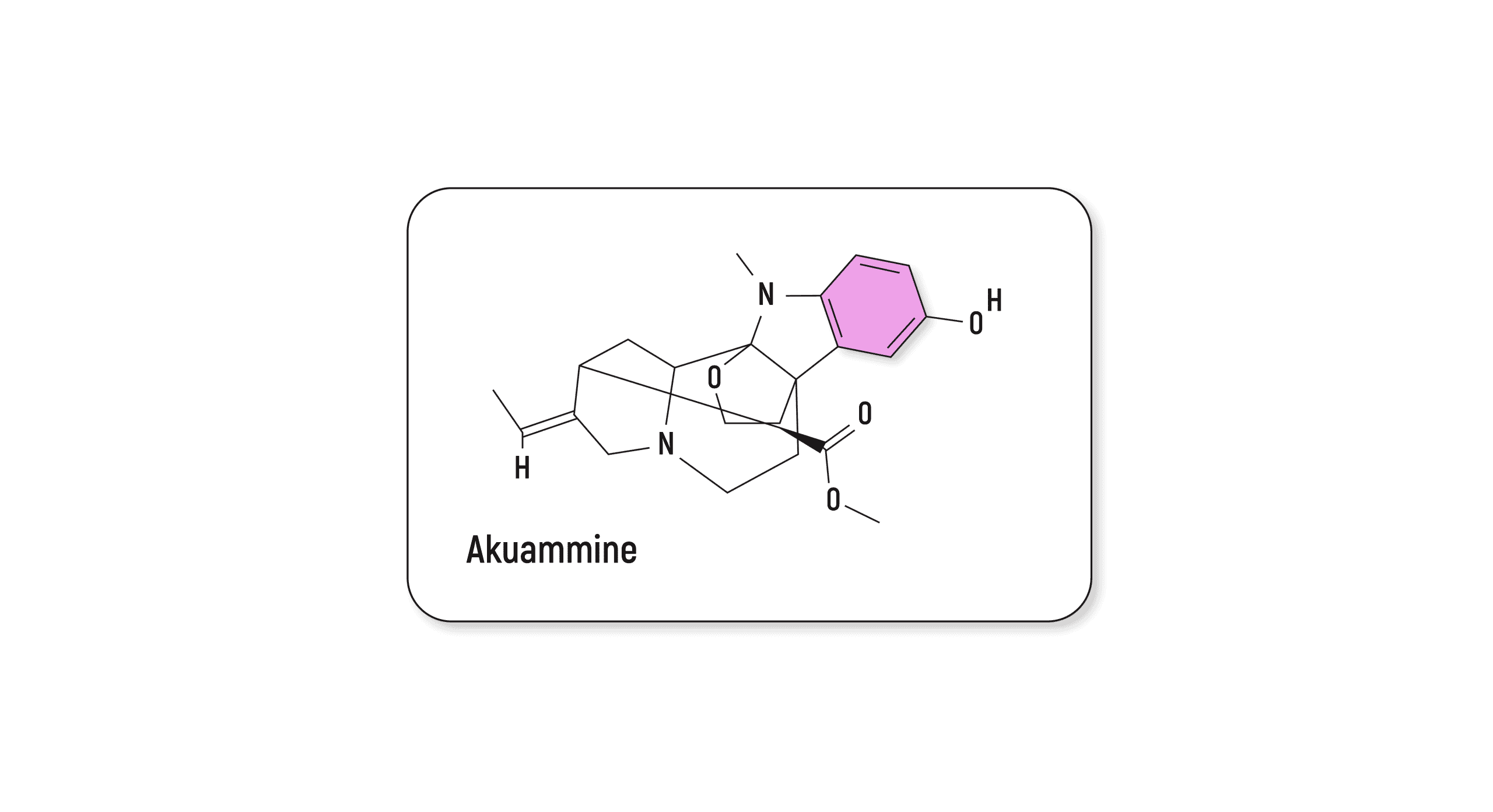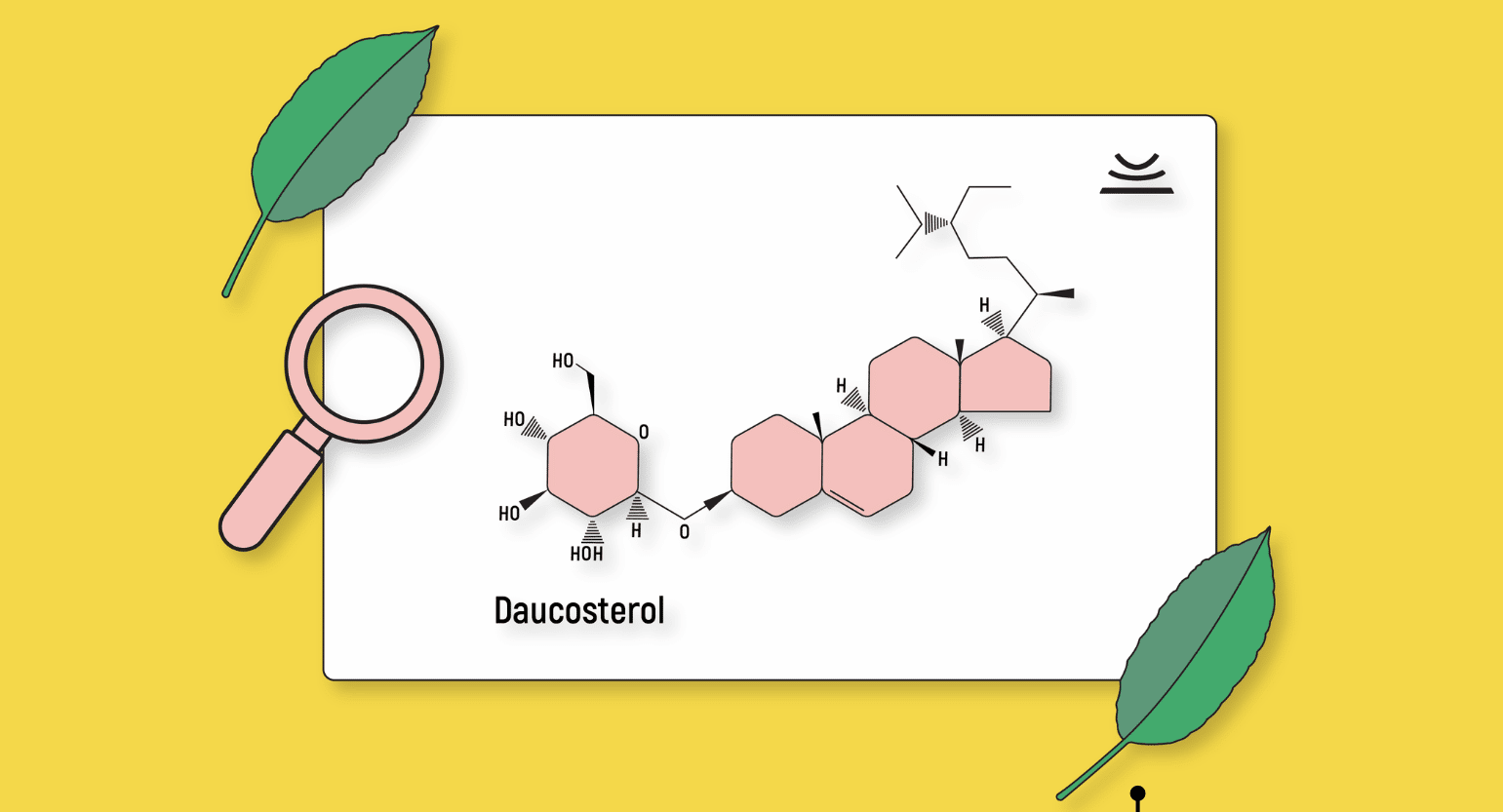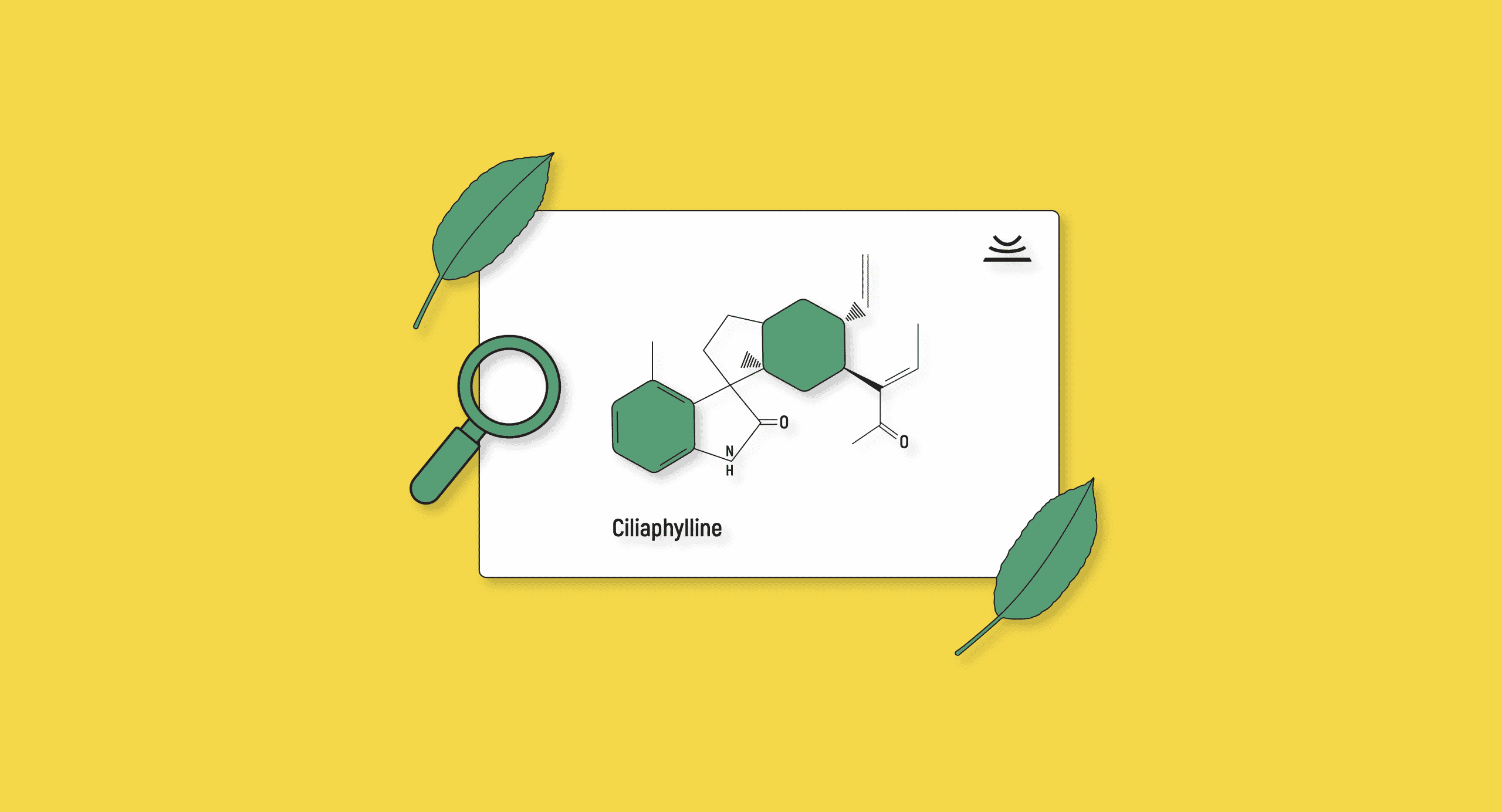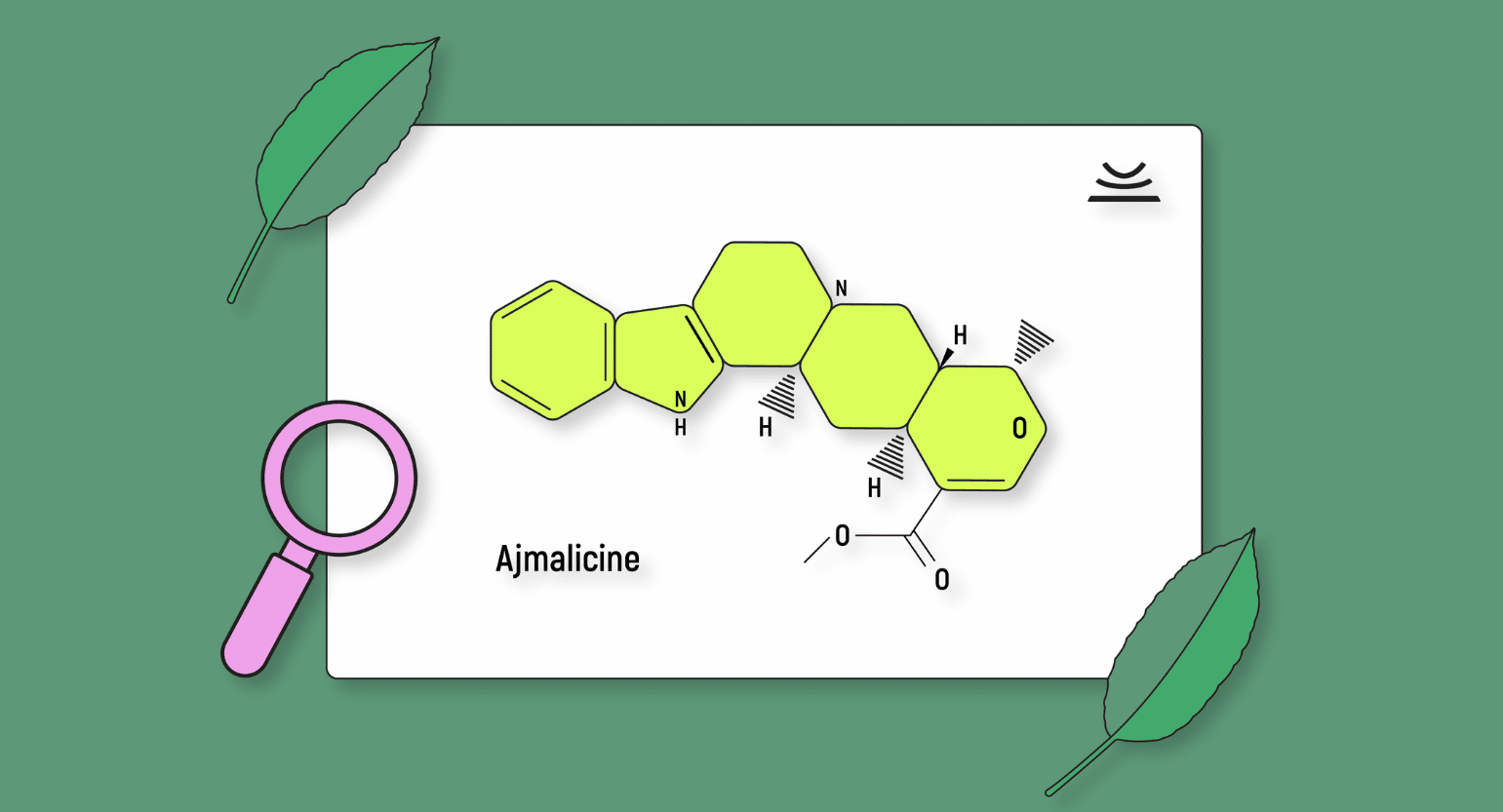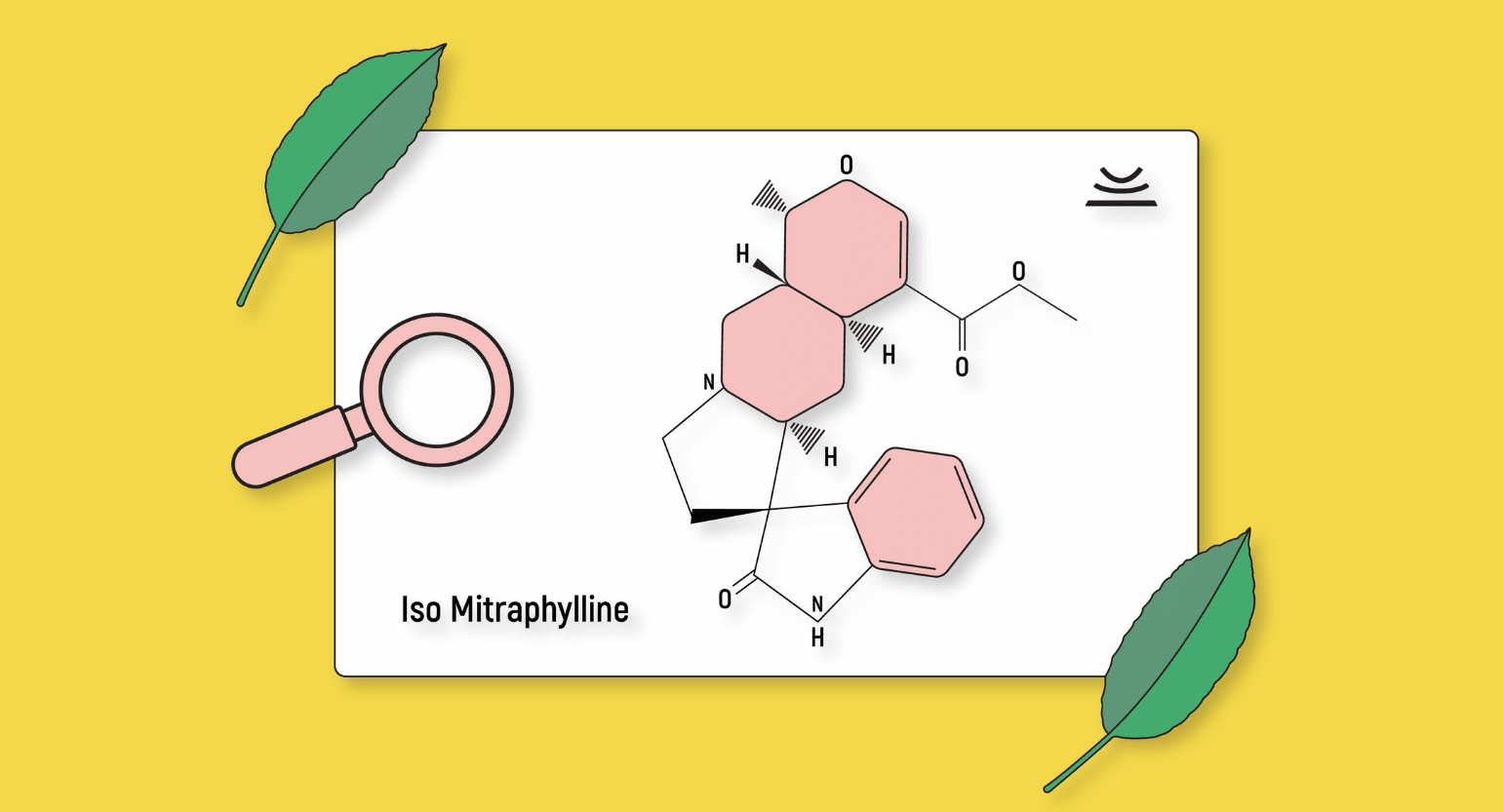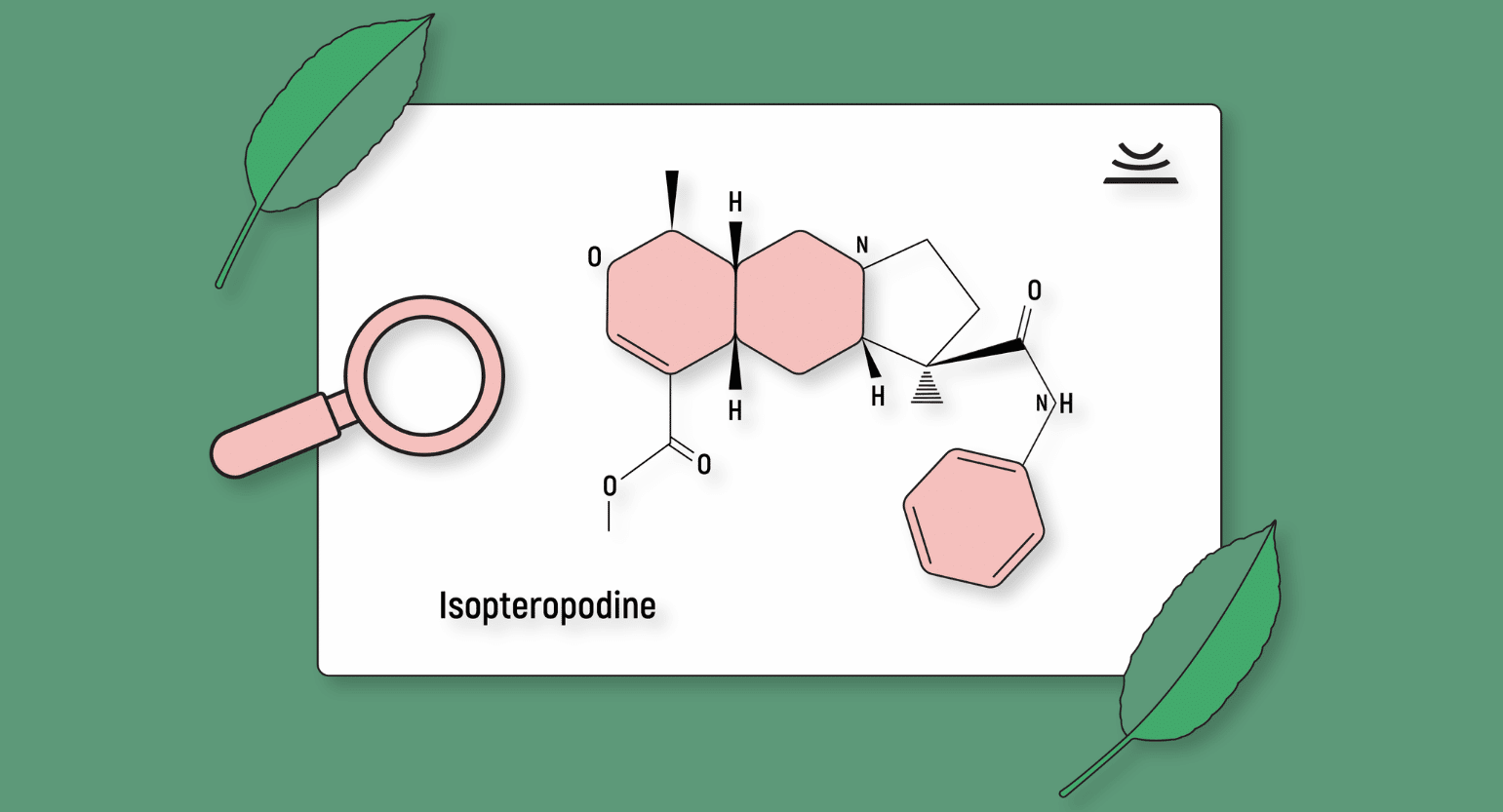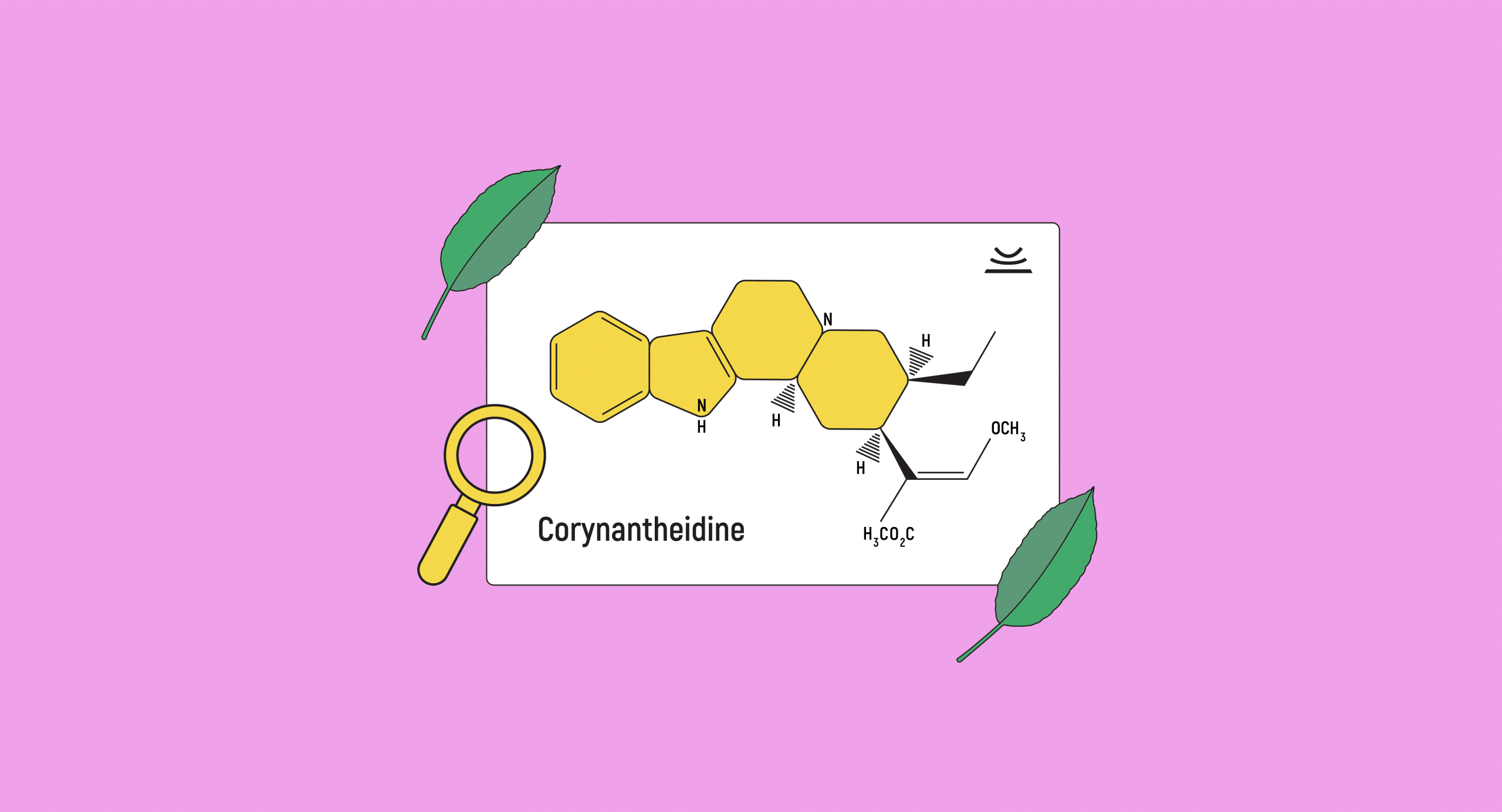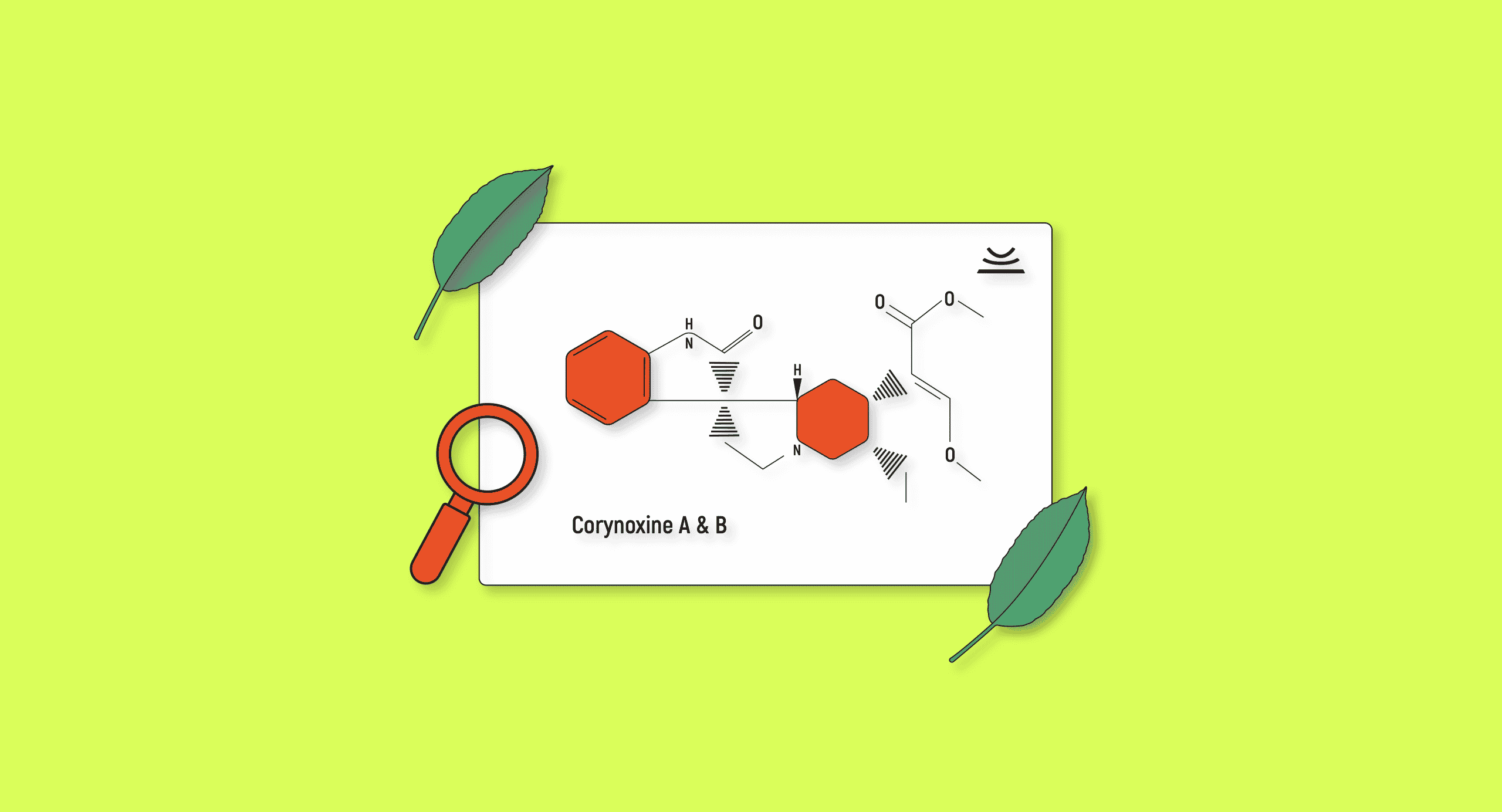What Is Akuammine?
Akuammine is an indole alkaloid found naturally in the kratom plant, meaning it’s made up of a benzene ring and a nitrogen ring and has physiological effects when consumed. It’s most notable for being an effective anti-malarial compound, which functions as an antiparasitic [1].
Since akuammine has some pharmacological use, more is known about this minor kratom alkaloid than many others. Mitragynine and 7-hydroxymitragynine — two of the major alkaloids contained within kratom — have been more widely studied.
Where Does Akuammine Come From?
Akuammine occurs naturally in kratom plants as one of over fifty alkaloids. However, it appears in higher concentrations in akuamma seeds, which come from the Picralima nitida tree. Akuammine is one of the primary active ingredients in traditional medicines that treat malaria and fevers.
Which Kratom Strains Are Highest in Akuammine?
It’s unclear which kratom strains are highest in akuammine, especially since the alkaloid has little to no noticeable effect. Since the levels of akuammine in kratom are naturally so low, it’s reasonable to assume that the concentration doesn’t fluctuate much — or at least by any significant margin — between the different kratom strains.

That said, white, green, and red kratom strains all likely contain equally low concentrations of akuammine.
What Does Akuammine Do & How Does It Work?
While akuammine isn’t likely responsible for kratom’s major effects, it can be a valuable alkaloid for several reasons. We’ll briefly discuss its primary functions and the mechanisms by which it works below.
1. Antiparasitic
Akuammine is best known for its ability to treat parasites, including malaria. The mechanism of this is unknown, but its ability to do so is one of the most significant pharmacological effects of akuammine. It can also reduce fever, a common and potentially severe symptom of malaria [2].
2. Pain Reliever
Akuammine is similar in molecular structure and makeup to mitragynine, which binds to opioid receptors and can block pain signals that would otherwise travel to the brain. Specifically, akuammine is known to be a mu-opioid receptor antagonist. Mu-opioid receptors play an essential role in the perception of pain — specifically chronic pain — and compounds that bind to them can effectively reduce the transmission of pain signals [3].
Recent studies suggest that akuammine isn’t as potent as a pain reliever as mitragynine. Still, experts believe that the compound is antinociceptive and can help reduce pain, especially mild to moderate muscle pain [4].
3. Euphoria
Akuammine binds to mu-opioid receptors, which are linked to pain and other noxious signals traveling in the body. By blocking these signals, akuammine can also create feelings of euphoria. This effect is mild, and the euphoric effects of kratom are more likely due to mitragynine. Still, akuammine might play some role in the positive and uplifting feelings associated with kratom use.

What Other Plants Contain Akuammine?
Akuammine is found naturally in kratom, but other plants are known to contain higher concentrations. Most notably, akuamma seeds, which come from the Picralima nitida tree, contain more than 0.5% akuammine by weight. The Vinca Major plant — known as periwinkle — belongs to the Apocynaceae family and has akuammine in relatively high concentrations.
Is Akuammine an Opiate?
No, akuammine is not an opiate. Some people confuse it with an opiate because it binds to opioid receptors in the human body, but it belongs to a distinct class of compounds that aren’t as potent or addictive as opiates. In fact, no alkaloids contained within kratom are considered opiates.

Is Akuammine Safe?
Akuammine is considered safe, especially when taken under the direction of a doctor or in reasonable doses. Kratom, as a whole, is also considered safe, although it can be habit-forming. Additionally, some side effects are associated with kratom use, which we’ll discuss below.
Related: Is Kratom Bad for You? What Are the Risks?
Side Effects of Akuammine
Akuammine isn’t usually taken on its own and is more often used along with other alkaloids via kratom powder or akuamma seeds. The most severe side effect of taking kratom is the potential for addiction. Although it’s considered far less addictive than opioids, it’s important to take tolerance breaks by avoiding everyday use and taking a week or two off every month.
Some less severe side effects of kratom include:
- Dizziness
- Headache
- Lethargy
- Mental fog
- Nausea
- Upset stomach
- Vomiting

Again, you can avoid these side effects by limiting your doses and how often you consume kratom.
How Much Akuammine Should I Take?
There is no recommended dose of akuammine, as it’s not commonly taken as an isolated alkaloid. Users taking akuammine via akuamma seeds usually take between 250 and 500 grams of akuamma seed powder. Users taking akuammine via kratom typically take between 1 and 8 grams of kratom powder, based on the desired overall effects.
We’ll include some of the standard doses below.
- 1 to 3 grams for stimulative effects and boosted mental acuity
- 3 to 6 grams for relief of mild pain and a sense of relaxation
- 6 to 8 grams for relief of more severe pain, sedation, and deep relaxation
How Long Do the Effects of Akuammine Last?
The effects of akuammine as a standalone alkaloid are unknown, but we can reasonably assume that they last as long as the overall effects of kratom. Most users taking lower doses experience effects for between one and three hours in most cases, while users taking larger amounts report effects that last between three and five hours.

Related: How Long Do the Effects of Kratom Really Last?
Wrapping Up: The Role of Akuammine in Kratom
Akuammine is a minor alkaloid found in kratom, and it’s also naturally occurring in akuamma and several other plants. Akuammine is best known as being an anti-malarial compound, as well as an antiparasitic alkaloid. It also binds to mu-opioid receptors, which means it can act as a natural analgesic.
For users taking akuammine via kratom powder, a dose between 1 and 3 grams usually suffices. Individuals looking for other effects as well — like relaxation and more potent pain relief — take up to around 8 grams of powder at a time.
- Kapadia, G. J., Angerhofer, C. K., & Ansa-Asamoah, R. (1993). Akuammine: an antimalarial indolemonoterpene alkaloid of Picralima nitida seeds. Planta medica, 59(06), 565-566.
- Amoa Onguéné, P., Ntie-Kang, F., Lifongo, L. L., Ndom, J. C., Sippl, W., & Mbaze, L. M. (2013). The potential of anti-malarial compounds derived from African medicinal plants. Part I: A pharmacological evaluation of alkaloids and terpenoids. Malaria journal, 12(1), 1-26.
- Dhaliwal, A., & Gupta, M. (2019). Physiology, opioid receptor.
- Creed, S. M., Gutridge, A. M., Argade, M. D., Hennessy, M. R., Friesen, J. B., Pauli, G. F., … & Riley, A. P. (2020). Isolation and pharmacological characterization of six opioidergic Picralima nitida alkaloids. Journal of natural products, 84(1), 71-80.

